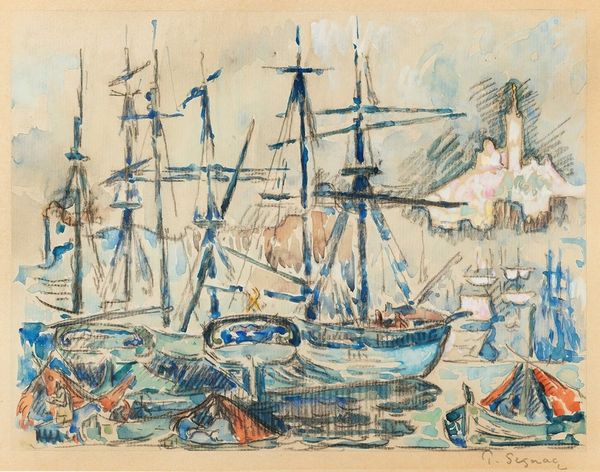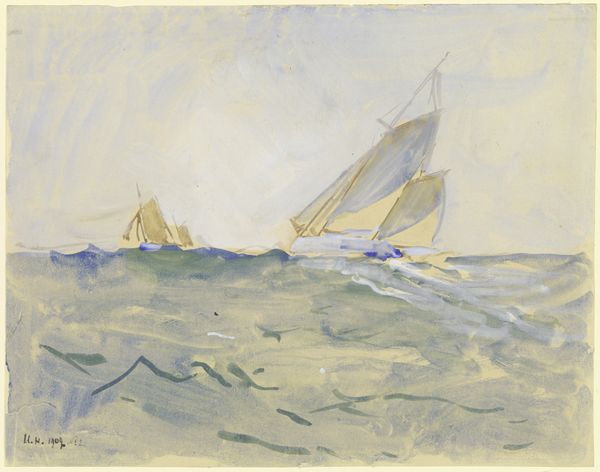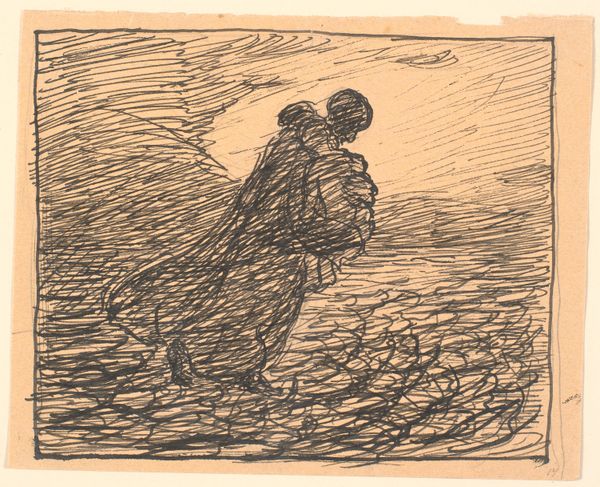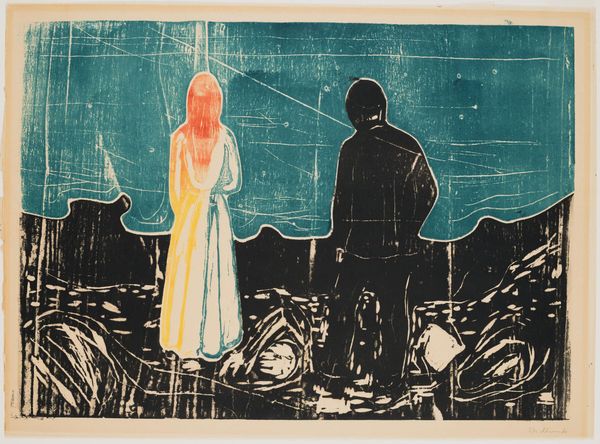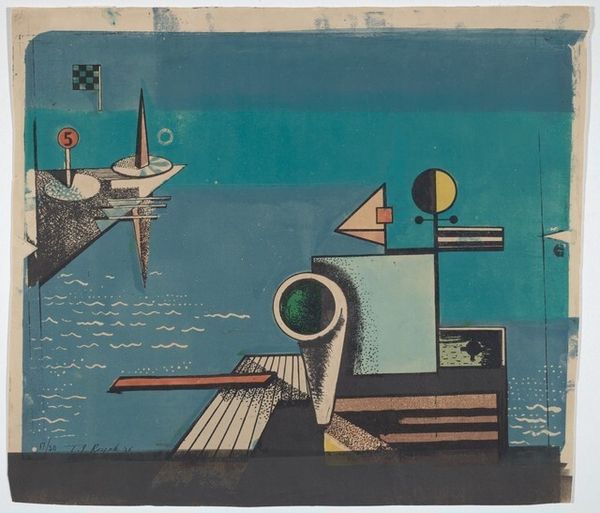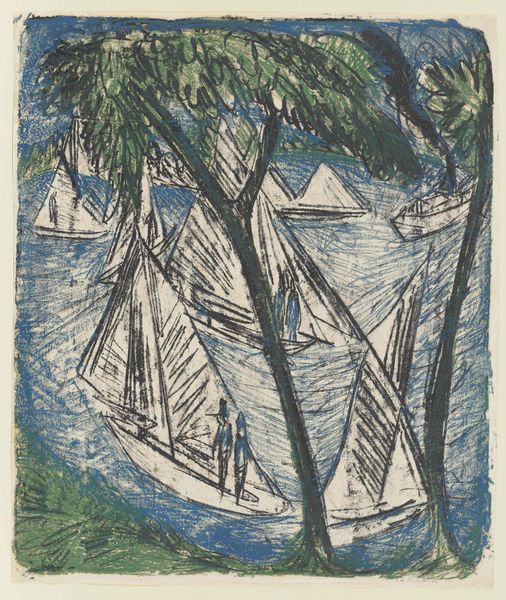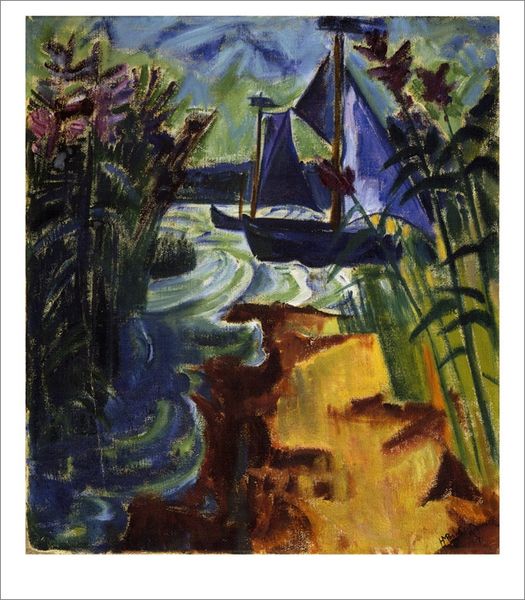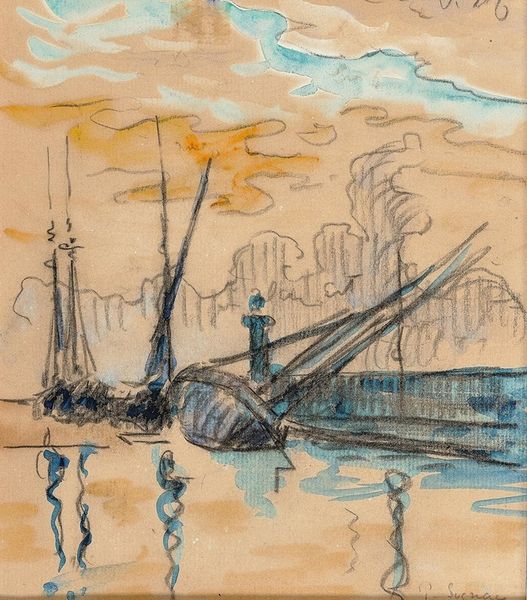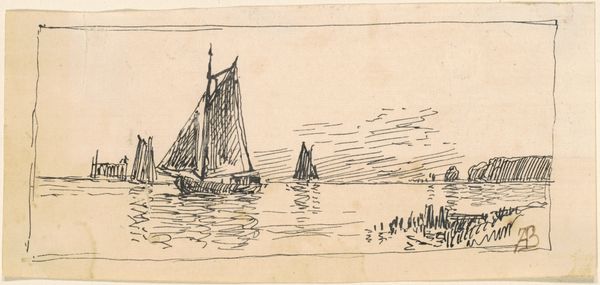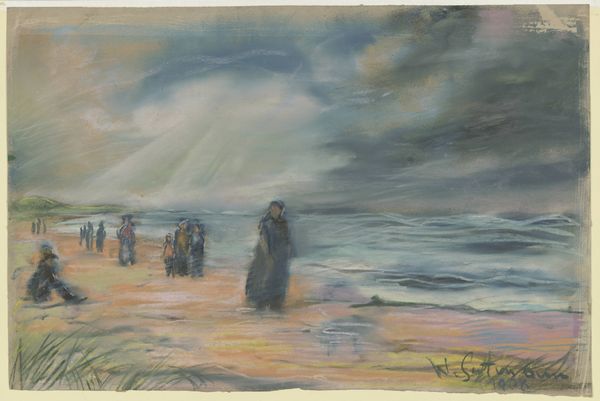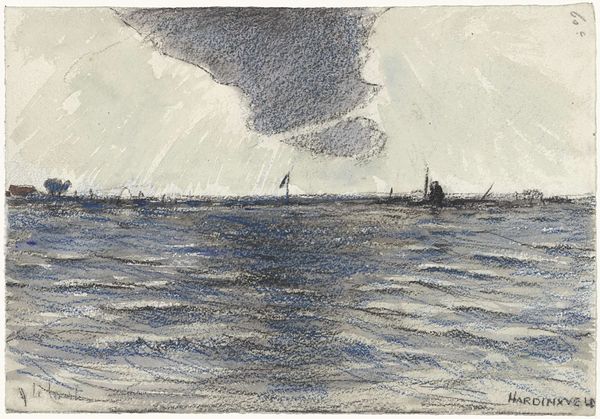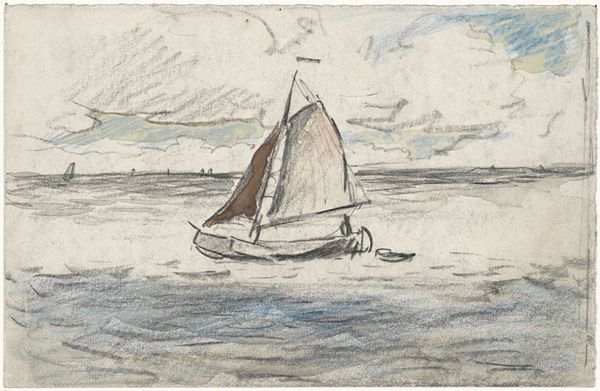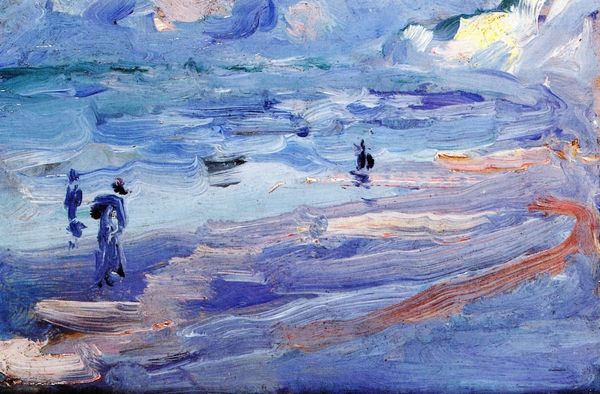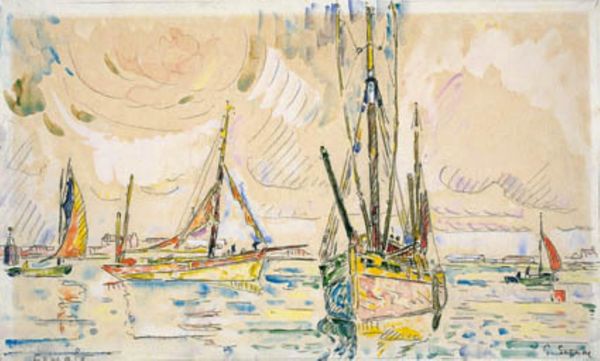
Dimensions: overall: 31.4 x 41 cm (12 3/8 x 16 1/8 in.)
Copyright: National Gallery of Art: CC0 1.0
Curator: Max Pechstein painted "Lovers by the Seashore" in 1919. It's currently rendered in watercolor. A rather evocative piece, wouldn't you say? Editor: It definitely evokes a certain…longing. The hazy light, the stark silhouettes of the figures. But there's also a sense of constraint in the way everything is so rigidly defined, even in watercolor. What was the social atmosphere at the time this work was conceived? Curator: Pechstein, despite being associated with Die Brücke and Expressionism, often returned to themes of idyllic harmony after periods of intense turmoil, like the First World War. It reflected a broader societal desire for stability and traditional values after such massive upheaval. Editor: Right. So, how does that influence his material choices? He’s working in watercolor, which we associate with spontaneity, but the execution seems consciously deliberate, each area carefully controlled. Did wartime scarcity dictate smaller formats and less resource-intensive media, or did he have freedom in that? Curator: Scarcity certainly played a role for many artists. But also consider the market: post-war, there was a strong market for more conventional, easily digestible art. Watercolor, often viewed as less ‘serious’ than oil, became a way for artists to make quick sales, especially idyllic scenes. Editor: So, watercolor becomes a tool for the artist, responding to material constraints and the pressure to produce saleable art objects in that environment. That golden light seems artificial. More of a commodity to sell dreams rather than some spiritual yearning. Curator: I see it more as the enduring pull of romanticism, a deliberately simplified rendering of idealized love. It's tempting to over-interpret based on post-war conditions; however, in its own time, it was perceived as modern and bold with the distortions from reality and color applications. Editor: Sure, but look at those boats; they seem to press against the shoreline like constraints pressing down on the romantic idealism between these two people on the seashore. And those angular lines – are they an element of modernism seeping into an otherwise sentimental rendering? Curator: Precisely! It's not a pure celebration, but a carefully negotiated vision of hope, shadowed by the stark realities he could not overlook at the time. Editor: Right, negotiated. Both lovers appear solid; they aren't going anywhere soon. Interesting way of capturing their situation through form. Curator: The piece allows us to consider the push and pull of public expectation versus personal expression in that specific, post-war moment in Germany. Editor: Agreed. It speaks volumes about the production, distribution, and consumption of art during times of social transformation. Thanks to all of that, the message is lasting, too.
Comments
No comments
Be the first to comment and join the conversation on the ultimate creative platform.
